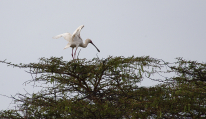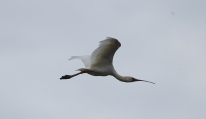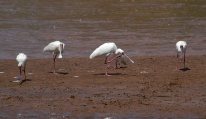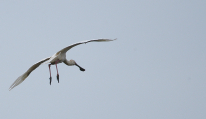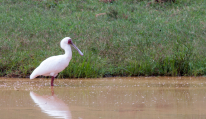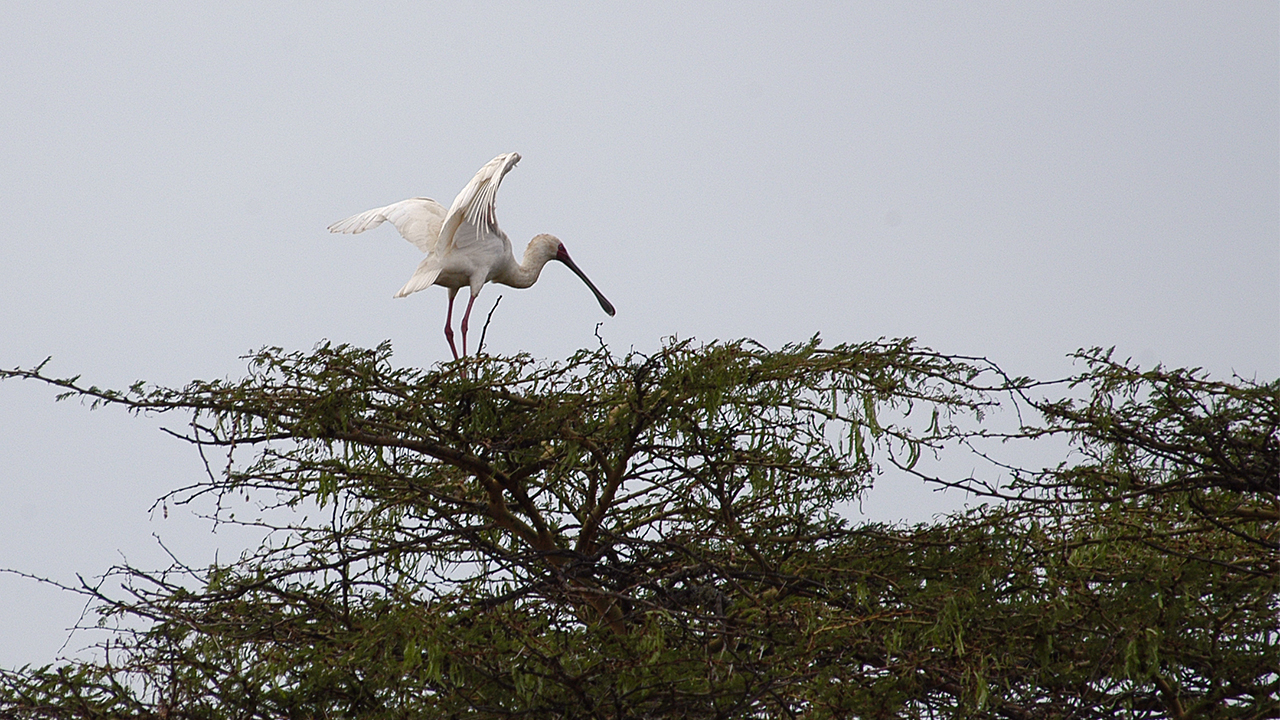Social Structure
African spoonbills nest in colonies of 250 pairs or more, often with other species. They frequently rest along the shores of shallow waters, sometimes in numbers as large as 1,000.
Behavior
Pairs or small groups of African spoonbills hunt in shallow water, although they may wade in water that reaches nearly to their knees.
Conservation
Although overall the population of African spoonbills is stable, in some areas they are threatened by the draining of wetlands.
Diet
The spoonbill has a carnivorous diet that consists of small fish and aquatic invertebrates, such as crayfish and water beetles.
Breeding
The spoonbill’s nest, usually in trees above water, is built from sticks and reeds and lined with leaves. During breeding season, the female lays three to five eggs. The male and female take turns incubating the eggs for about a month. The chicks are ready to leave the nest a month after they hatch.
Friends & Foes
Large flocks of spoonbills can be seen resting on shore with yellow-billed storks. Spoonbills sometimes eat with herons, taking advantage of the insects and crustaceans that these birds disturb while stalking their food.
Population in Kenya
In Kenya, African spoonbills are found in the southwest and around the shores of Lake Turkana.
Range & Habitat
The African spoonbill is common throughout most of sub-Saharan Africa. It can be found on reservoirs, artificial ponds, and other inland waters; in wetlands, such as marshes, swamps, and riverbanks; and on plains and savannas. Although it is sometimes described as nomadic, its movements are inspired by local rainfall rather than a change in season.



